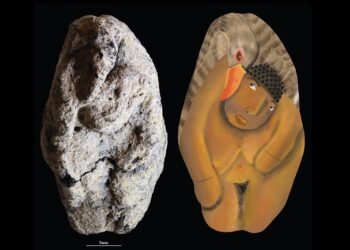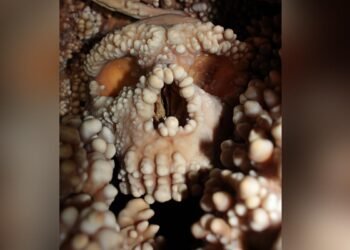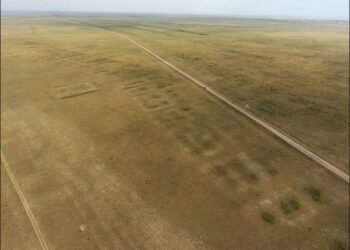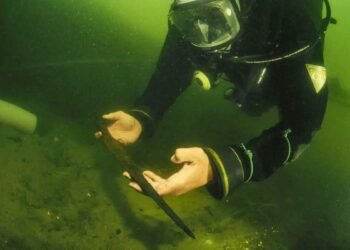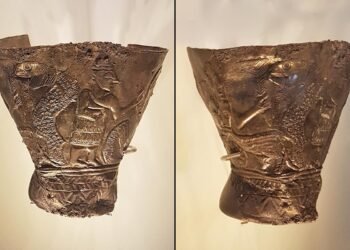Archaeologists have unearthed what they believe to be the bathing quarters and combat gymnasium of Alexander the Great at the Aigai Palace in northern Greece. This revelation was unveiled in the final episode of the Channel 4 series “Bettany Hughes’ Treasures of the World.”

Situated in the ceremonial heart of the ancient Macedonian kingdom, the sprawling Aigai palace spans an impressive 15,000 square meters, surpassing even the grandeur of the Parthenon. The palace complex, constructed during the reign of Philip II, features fortified city walls, courtyards, temples, sanctuaries, a theater, a palaestra (boxing school), and tombs.
Archaeologists believe that the newly discovered bathing area served as a communal space where Alexander the Great would have bathed alongside his companions, including his close confidant Hephaestion and other young men who accompanied him on military campaigns.
Bettany Hughes, host of the series, said: “There’s a significant drain carved into the rock, along with a communal bathroom. This area is believed to be where Alexander the Great would have bathed alongside his companions.” Hughes emphasized the communal aspect of these baths, where young men, trained in combat, wrestling, and hunting, engaged in rituals and bonding experiences akin to those seen after modern-day football matches.
The palace, known today as Vergina, holds immense historical importance, as it was where Alexander the Great was crowned king following the assassination of his father, King Philip II. The restoration efforts of the palace have been extensive, with 1,400 square meters already meticulously restored over a 16-year project costing €20 million. Despite this progress, Alexander’s specific bedroom remains unidentified.
Alexander the Great, renowned for his military prowess, ascended to power in 336 BCE and went on to build one of the largest empires in history, stretching from Greece to Egypt and into the Indian subcontinent. The discovery of his bathing area and combat gymnasium provides insight into the daily life and training regimen of the young king.

The discovery underscores the importance of Aigai as a historical and cultural landmark, alongside iconic structures like the Parthenon. Continuous habitation of the site since the Early Bronze Age underscores its enduring significance, evolving from a prosperous center in the Early Iron Age to a thriving urban hub in subsequent centuries.
Greece’s unveiling of the restored Palace of Aigai earlier this year marked a culmination of years of restoration work.



